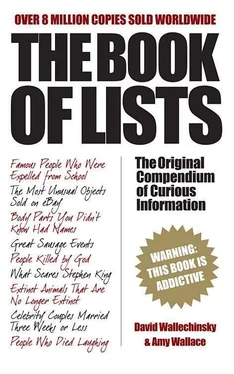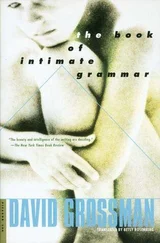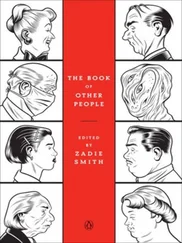THOMAS JEFFERSON (1743–1826), US president
The 83-year-old former president was suffering badly from diarrhoea, but he had hopes of lasting until July 4, 1826, the 50th anniversary of the signing of the Declaration of Independence. From his sickbed, he asked, ‘This is the fourth?’ When he was informed that it was, he died peacefully.
JOHN ADAMS (1735–1826), US president
Adams, like Jefferson, held on until July 4, 1826, before dying at the age of 90. He is reported to have said, ‘Thomas Jefferson survives… Independence forever,’ unaware that his old friend had died a few hours earlier.
DR JOSEPH GREEN (1791–1863), English surgeon
While lying on his deathbed, Dr Green looked up at his own doctor and said, ‘Congestion.’ Then he took his own pulse, reported the single word, ‘Stopped,’ and died.
HENRIK IBSEN (1828–1906), Norwegian poet and dramatist
On May 16, 1906, Ibsen was in a coma in his bedroom, surrounded by friends and relatives. A nurse told the others in the room that the famed playwright seemed to be a little better. Without opening his eyes, Ibsen uttered one word: ‘ Tvertimod ’ (‘On the contrary’). He died that afternoon without speaking again.
MARK TWAIN (1835–1910), US humorist
Born in 1835, the year of Halley’s Comet, Twain often stated that he had come into the world with the comet and would go out of the world with it as well. Halley’s Comet next returned in 1910, and on April 21 of that year Twain died.
ARNOLD SCHÖNBERG (1874–1951), Austrian composer
Schönberg’s lifelong fascination with numerology led to his morbid obsession with the number 13. Born in 1874 on September 13, he believed that 13 would also play a role in his death. Because the numerals seven and six add up to 13, Schönberg was convinced that his 76th year would be the decisive one. Checking the calendar for 1951, he saw to his horror that July 13 fell on a Friday. When that day came, he kept to his bed in an effort to reduce the chance of an accident. Shortly before midnight, his wife entered the bedroom to say goodnight and to reassure him that his fears had been foolish, whereupon Schönberg muttered the word ‘harmony’ and died. The time of his death was 11:47 p.m., 13 minutes before midnight on Friday July 13, in his 76th year.
ELIZABETH RYAN (1892–1979), US tennis player
Elizabeth Ryan won 19 Wimbledon tennis championships between 1914 and 1934 — a record that stood for 45 years. On July 6, 1979, the day before Billie Jean King broke her record by winning a 20th Wimbledon title, the 87-year-old Ryan became ill while in the stands at Wimbledon. She collapsed in the clubhouse and died that night.
LEONARD WARREN (1911–60), US opera singer
Warren was performing in Verdi’s La Forza del Destino on the stage of the Metropolitan Opera in 1960. He had just begun the aria ‘O fatal urn of my destiny’. When he reached the word ‘fatal’, he suddenly pitched forward, dead of a heart attack.
CHARLES DAVIES (1927–95), British singer
Davies, age 67, was giving a solo rendition of the old soldiers’ song ‘Goodbye’ at the annual dinner of the Cotswold Male Voice Choir in Echington, England, on January 3, 1995. He finished with the words, ‘I wish you all a last goodbye.’ As the crowd applauded, Davies collapsed and died.
GEORGE STORY (1936–2000), US journalist
In 1936 the premier issue of Life featured a picture of newborn baby George Story under the headline ‘Life Begins’. Over the years, the magazine periodically updated readers about the ‘ Life baby’, as Story married twice, had children and retired. On April 4, 2000, just days after Life had announced that it would cease publication, Story died of heart failure. The final issue of Life featured one last article about Story. The headline: ‘A Life Ends’.
CHARLES SCHULZ (1922–2000), US cartoonist
In 1999 Schulz, the creator of the popular comic strip Peanuts , announced his decision to retire because of poor health. He died on February 12, 2000, the night before the last original Peanuts ran in the Sunday newspapers. The timing was ‘prophetic and magical’ said close friend and fellow cartoonist Lynn ( For Better or for Worse ) Johnston. ‘He made one last deadline. There’s romance in that.’
– C.F.
PRESERVING OUR HERITAGE — 29 STUFFED OR EMBALMED HUMANS AND ANIMALS
TUTANKHAMEN
In 1922, while excavating in the Valley of the Kings, English archaeologist Howard Carter discovered the tomb of Tutankhamen, a king of the 18th Dynasty of Egypt, who flourished about 1348BC. The mummy of the pharaoh was encased in a 6-ft coffin containing 2,448 lb of gold. Over the bandages on the king’s face was a lifelike gold mask inlaid with precious jewels. A dazzling assortment of rings, necklaces, amulets and other exquisite ornaments were found among the body wrappings. The internal organs of the king had been removed, embalmed and placed in a separate alabaster chest. The mummy, coffin and other valuables from the tomb have toured the world and are currently diplayed at the Egyptian Museum in Cairo.
CHARLEMAGNE
This ruler of the Holy Roman Empire died in 814. Embalmed, he was dressed in his royal robes, a crown placed on his head, a sceptre placed in his hand, and thus he was propped up in a sitting position on his marble throne. His preserved body remained on that throne for 400 years. At last, in 1215, Holy Roman Emperor Frederick II removed the corpse, which was found to be in excellent condition. It was buried in a gold and silver casket in the cathedral at Aix-La-Chapelle.
EL CID (Rodrigo Díaz de Bivar)
Spanish leader in the war against the Moors, he established the independent kingdom of Valencia. Wounded in battle in 1099 and dying, El Cid’s last wish was that his body be embalmed and then seated on his horse, Babieca, during the next battle. When the next battle came — an attack on Valencia by King Bucar of Morocco — and the Spanish were on the verge of defeat, the preserved corpse of El Cid, mounted on his horse, appeared at the head of the troops. Heartened, the Spanish troops rallied and were victorious.
INÉS DE CASTRO
When King Pedro of Castile was a young prince, he fell in love with Inés de Castro. His father, fearing political complications, trumped up a charge against Inés and had her beheaded. Pedro waited until he had become king after his father died, then had the assassins’ hearts torn out and ordered Inés’ body exhumed. Her corpse was dressed, placed on the throne and officially crowned queen. All dignitaries were forced to pay homage by kissing her hand and treating her like a living monarch. Pedro died in 1369.
RICHARD II
This English king was deposed in 1399 and probably murdered in 1400. In 1413 Henry V had Richard’s body embalmed and put on public display in full royal regalia. Three days later Henry was the chief mourner at Richard’s second funeral, during which Richard was interred in Westminster Abbey. At one time there was a hole in the side of the tomb through which visitors could put their hands to touch the king’s head. In 1776 an enthusiastic schoolboy thrust his hand in and stole Richard’s jawbone. The boy’s descendants kept the relic until 1906, when it was finally restored to its rightful resting place.
CATHERINE OF VALOIS
Henry V’s queen died in 1437. Her grandson, Henry VII, made major alterations to Westminster Abbey, which involved moving her embalmed body. She was placed in a crude coffin constructed of flimsy boards and left above ground. There she remained a public spectacle for over 200 years. Vergers used to charge a shilling to take off the lid so curious visitors could view her corpse. But seeing wasn’t enough for Samuel Pepys, who went to the abbey on his 36th birthday. ‘I had the upper part of her body in my hands, and I did kiss her mouth, reflecting upon that I did first kiss a Queene.’ The body was finally removed from public view in 1776.
Читать дальше












